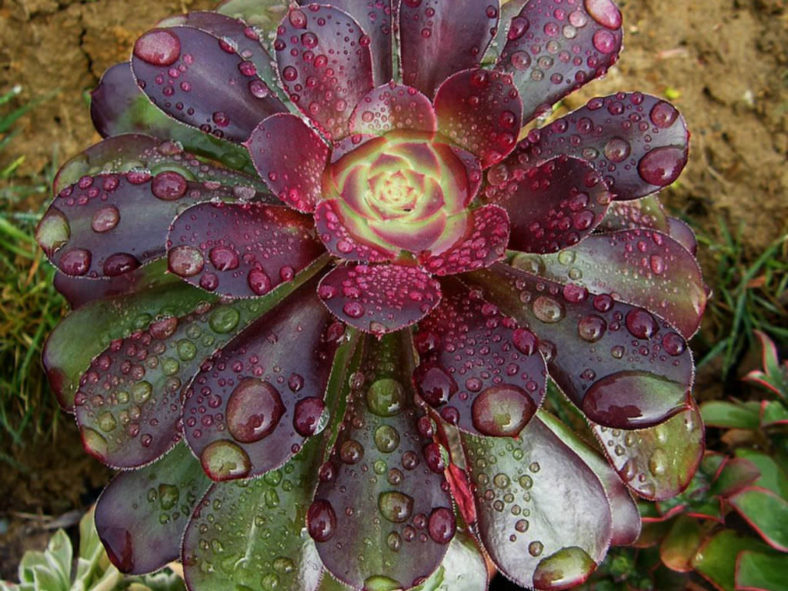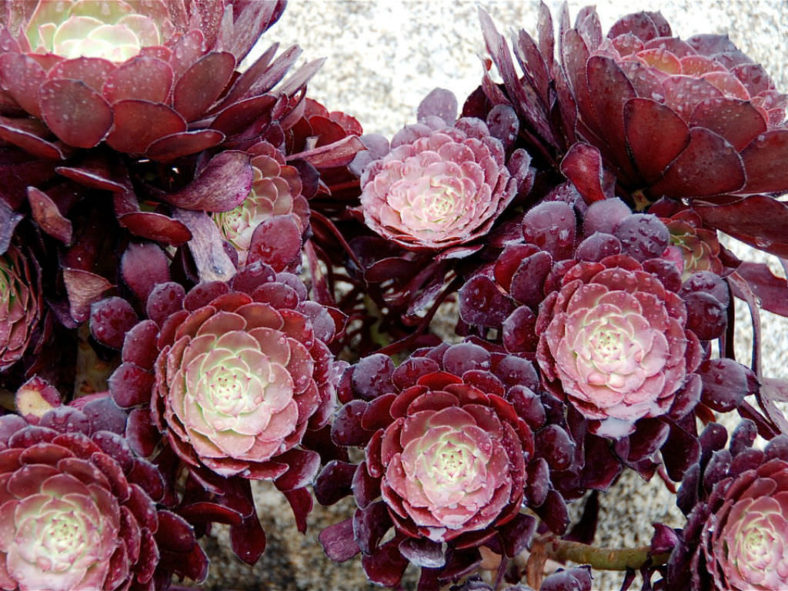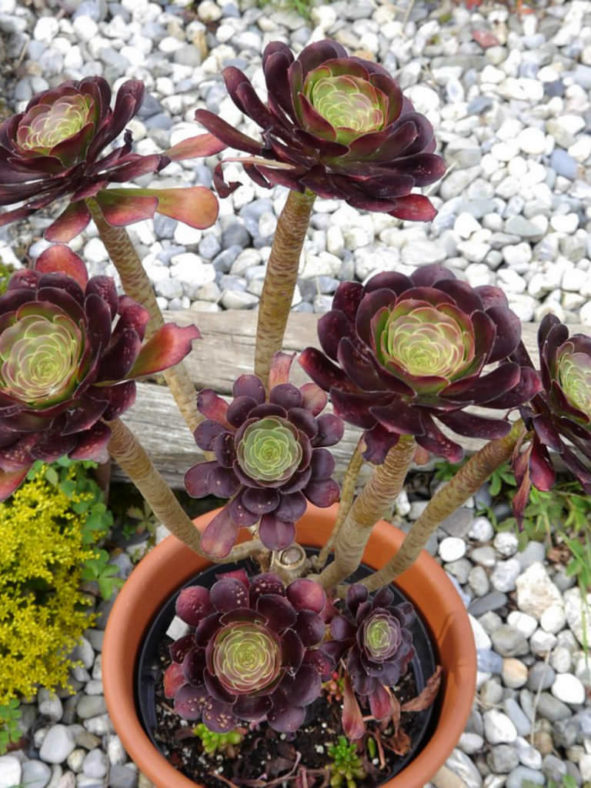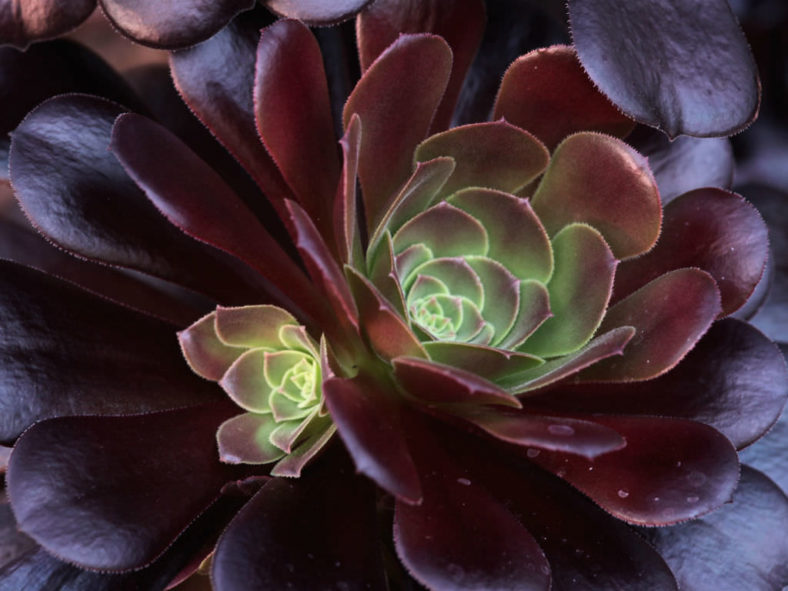Scientific Name
Aeonium 'Plum Purdy'
Common Name(s)
Plum Purdy Aeonium
Scientific Classification
Family: Crassulaceae
Subfamily: Sempervivoideae
Tribe: Aeonieae
Genus: Aeonium
Description
Aeonium 'Plum Purdy' is a succulent shrub that forms stunning rosettes of glossy spathulate leaves with ciliate margins. It can grow up to 3 feet (90 cm) tall, while the rosettes can reach a diameter of up to 10 inches (25 cm). The leaves emerge green and quickly darken to a beautiful plum color, so the center is often greener than the surrounding plum color. They can grow up to 5 inches (12.5 cm) long.
The bright yellow flowers appear in a tight capitate inflorescence rising just above the foliage in spring.

Hardiness
USDA hardiness zones 9b to 11b: from 25 °F (−3.9 °C) to 50 °F (+10 °C).
How to Grow and Care
Aeoniums do not like hot or dry weather. Therefore, they may go dormant in summer and not require any water except in arid conditions. In extreme heat, their leaves will curl to prevent excessive water loss. Growing them in moist shade will keep them growing, but their true growth season is winter to spring when temperatures are cool, 65 to 75 °F (18 to 24 °C), and damp. In the winter, water whenever the soil has dried out. Test by poking your finger down into the soil an inch or 2 (2.5 to 5 cm). Too much moisture or allowing them to sit in wet soil will cause root rot.
A sandy loam or regular potting mix is better than a mix specifically for cacti and succulents since Aeoniums need some moisture. If you grow them in containers, repot them with fresh potting soil every 2 to 3 years.
Feed during the growing season with a half-strength balanced fertilizer every month or so. Do not feed while dormant.
See more at How to Grow and Care for Aeonium.
Origin
Aeonium 'Plum Purdy' is a hybrid created by Jack Catlin. It results from a cross between Aeonium arboreum 'Zwartkop' and Aeonium canariense.
Link
- Back to genus Aeonium
- Succupedia: Browse succulents by Scientific Name, Common Name, Genus, Family, USDA Hardiness Zone, Origin, or cacti by Genus
Photo Gallery
Click on a photo to see a larger version.


